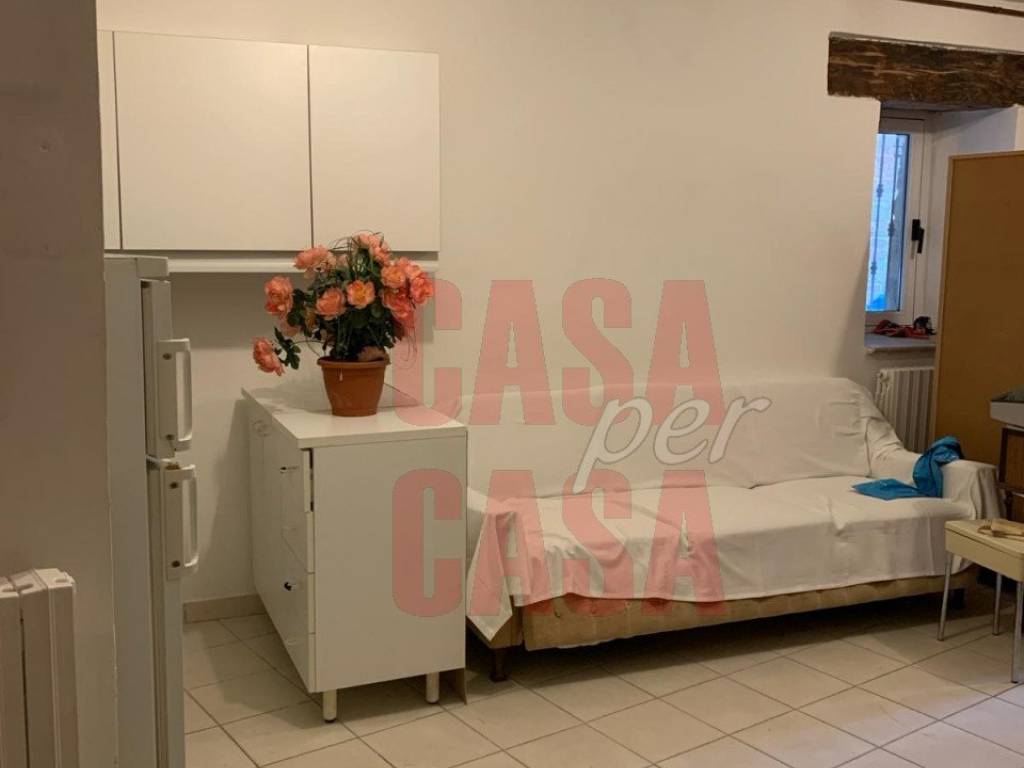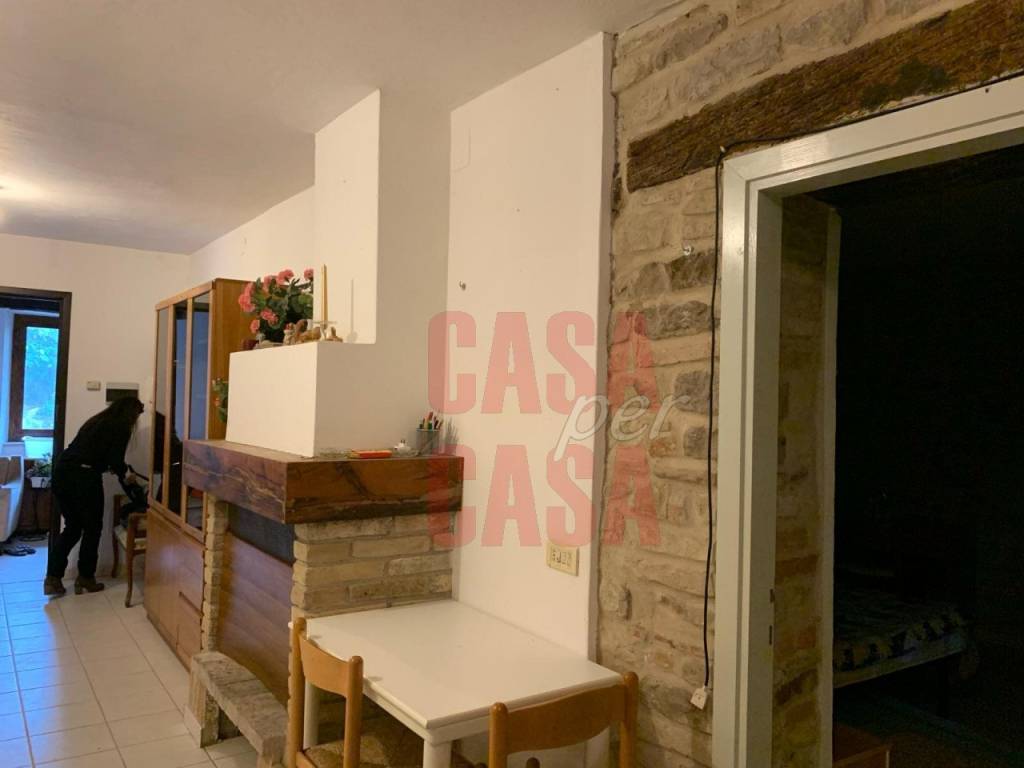1/24


Note
Listing updated on 03/18/2024
Description
This description has been translated automatically by Google Translate and may not be accurate
reference: PDForce
In Force, located a few steps from the splendid, finely restored Civic Tower and located on the ground floor of an ancient building from the 1200s, we find the mini-apartment completely renovated in 2000. The entrance to the premises takes place right from the base of the tower, crossing the arch: From the street level there is access to the shared entrance only with another apartment. Armored door and entrance into the living room with beautiful fireplace and equipped with kitchenette. From here you access the double bedroom and the adjacent bathroom with a spacious shower cabin. The rooms are full of charm: the walls are entirely covered in hand-hewn stone. An element of absolute value are the views and the panoramic position. Below, the Aso Valley rises, among a triumph of green hills, towards the Sibillini Mountains. From here it is possible to admire the Monte Vettore, Sibilla and Priora massifs in all their splendor.
Force is a small and characteristic medieval village perched on a narrow and long hill that rises to 690 meters high, between the middle valley of the Aso River and the head of the Tesino. It is located in the north-western sector of the provincial territory of Ascoli, not far from the border with that of Fermo and on the SP 93 Venarottase which connects it to the Tronto valley and Ascoli Piceno, from which it is twenty-four kilometers away. It has a historical nucleus perched on the main relief and a modern part stretched towards the south and the Monte la Torre pass, with three hamlets: Montecchio, Monte Moro and Quinzano.
Force, given its fortunate position almost equidistant between the sea and the mountains, it enjoys suggestive natural landscapes, among mountains, woods, valleys and with a view that extends as far as the Adriatic Sea. For this reason it has always been a place frequented by tourists and holidaymakers. Its name probably derives from its geographical position, a fork between three valleys: Aso, Tesino Tronto.
It is believed that the foundation of the village of Force originated around the 5th century AD. C., from the movement of the populations of the valley to escape the threat of the Goths and then the Lombards. The village is mentioned for the first time in documents dating back to the 9th century, as a possession of the Abbey of Farfa. From the mid-13th century, Force began to claim its autonomy as a free municipality, starting to govern itself with its own magistracies and statutes. Bitter battles began against the powerful Ascoli to maintain its independence, which it definitively lost under the pontificate of Pope Pius V. Going up from the Aso valley, you enter the town along Via S. Francesco, skirting the apse of the church of the same name and an old fortified tower, old entrance to the village. Arriving in the nearby square, you find yourself in front of the façade of the Church of S. Francesco, rebuilt in 1882 by the architect Giuseppe Sacconi in place of a previous ancient building, of which the tower remains.--d64da3e1827919ffd7e433d7b8df0093!
Force is a small and characteristic medieval village perched on a narrow and long hill that rises to 690 meters high, between the middle valley of the Aso River and the head of the Tesino. It is located in the north-western sector of the provincial territory of Ascoli, not far from the border with that of Fermo and on the SP 93 Venarottase which connects it to the Tronto valley and Ascoli Piceno, from which it is twenty-four kilometers away. It has a historical nucleus perched on the main relief and a modern part stretched towards the south and the Monte la Torre pass, with three hamlets: Montecchio, Monte Moro and Quinzano.
Force, given its fortunate position almost equidistant between the sea and the mountains, it enjoys suggestive natural landscapes, among mountains, woods, valleys and with a view that extends as far as the Adriatic Sea. For this reason it has always been a place frequented by tourists and holidaymakers. Its name probably derives from its geographical position, a fork between three valleys: Aso, Tesino Tronto.
It is believed that the foundation of the village of Force originated around the 5th century AD. C., from the movement of the populations of the valley to escape the threat of the Goths and then the Lombards. The village is mentioned for the first time in documents dating back to the 9th century, as a possession of the Abbey of Farfa. From the mid-13th century, Force began to claim its autonomy as a free municipality, starting to govern itself with its own magistracies and statutes. Bitter battles began against the powerful Ascoli to maintain its independence, which it definitively lost under the pontificate of Pope Pius V. Going up from the Aso valley, you enter the town along Via S. Francesco, skirting the apse of the church of the same name and an old fortified tower, old entrance to the village. Arriving in the nearby square, you find yourself in front of the façade of the Church of S. Francesco, rebuilt in 1882 by the architect Giuseppe Sacconi in place of a previous ancient building, of which the tower remains.--d64da3e1827919ffd7e433d7b8df0093!
Features
- Type
- Apartment | Medium property class
- Contract
- Sale
- Floor
- Ground floor
- Building floors
- 2
- Lift
- No
- Surface
- 50 m²
- Rooms
- 2
- Bedrooms
- 1
- Kitchen
- Kitchen nook
- Bathrooms
- 1
- Furnished
- No
- Balcony
- No
- Terrace
- No
Other features
- Security door
Surface detail
Other
- Floor
- Ground floor
- Surface
- 50.0 m²
- Coefficient
- 100%
- Surface type
- Main
- Commercial area
- 50.0 m²
Price information
- Price
- € 50,000
- Price per m²
- 1,000 €/m²
Detail of costs
- Condominium fees
- No condominium fees
Energy efficiency
Condition
Good condition / LiveableEnergy certification
Waiting for certification
Floorplan

Additional options






















